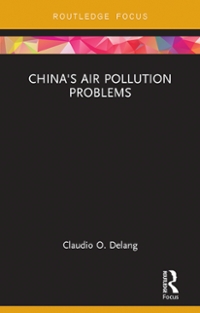Question
1. When the economy is in equilibrium, a. planned investment equals actual investment. b. planned savings will equal zero. c. there can be no unemployment.
1. When the economy is in equilibrium,
a. planned investment equals actual investment.
b. planned savings will equal zero.
c. there can be no unemployment.
d. changes in autonomous spending will have no impact on national income.
Answer ( )
2. Crowding out occurs when
a. increased taxes force higher levels of national saving.
b. deficit spending by the government forces private investment spending to contract.
c. local businesses cannot get government contracts because of the higher bids of large corporations.
d. foreign investors are willing to pay higher prices for U.S. bonds than American citizens will pay.
Answer ( )
3. Dissaving occurs when a household
a. spends less than it receives in disposable income.
b. spends more than it saves.
c. saves more than it spends.
d. consumes more than it receives in disposable income.
Answer ( )
4. If wealth increases, the consumption function
a. shifts upward.
b. shifts downward.
c. is unaffected.
d. has a steeper slope.
Answer ( )
5. The Fed is institutionally independent. A major advantage of this is that
a. monetary policy is subject to regular congressional scrutiny.
b. monetary policy will often offset fiscal policy.
c. monetary policy is not controlled by politicians.
d. monetary policy is usually coordinated with fiscal policy.
Answer ( )
6. A change in imports caused by rising U.S. incomes is
a. an increase in autonomous expenditure.
b. a decrease in autonomous expenditure.
c. an increase in induced exports.
d. change in induced expenditure.
Answer ( )
7. When the economy is in equilibrium,
a. planned investment equals actual investment.
b. planned savings will equal zero.
c. there can be no unemployment.
d. changes in autonomous spending will have no impact on national income.
Answer ( )
8. According to neoclassical growth theory,
a. investment in physical capital is critical for economic growth.
b. investment in "human capital" is critical factor for economic growth.
c. technological change is the critical factor for economic growth.
d. institutions are the critical factor for economic growth.
Answer ( )
9. What is the crucial difference between inflation generated on the demand side versus inflation generated on the supply side?
a. Demand-side inflation is short-lived, while supply-side inflation lasts for a long time.
b. Demand-side inflation leads to budget surpluses, while supply-side inflation contributes to budget deficits.
c. Supply-side inflation is subject to control of policy makers, while demand-side inflation is beyond their reach.
d. Demand-side inflation is normally accompanied by rising real GDP, while supply-side inflation may be accompanied by falling real GDP.
Answer ( )
10. An inflationary gap is
a. the increase in unemployment associated with a recession.
b. the budget deficit encountered during a recession.
c. the distance between the equilibrium level of GDP and potential GDP.
d. the amount of government spending needed to end a recession.
Answer ( )
11. The quantity of real GDP supplied depends on the
a. level of aggregate demand.
b. quantity of capital, bonds, and stocks.
c. quantity of labor, the quantity of capital, and the state of technology.
d. price level, the unemployment rate, and the quantity of government expenditures on goods and services.
Answer ( )
12. In the macroeconomic short run,
a. actual real GDP may be less than or more than potential GDP.
b. the unemployment rate is zero.
c. by definition, the economy is always moving away from full employment.
d. actual real GDP always equals potential GDP.
Answer ( )
13. Which of the following statements is TRUE?
a. The long-run aggregate supply curve is upward sloping.
b. The long-run aggregate demand curve is upward sloping.
c. The short-run aggregate supply curve is vertical.
d. The long-run aggregate supply curve is vertical.
Answer ( )
14. Which of the following events will increase long-run aggregate supply?
a. an increase in the interest rate
b. an increase in resource prices
c. a decrease in expected profit
d. an advance in technology
Answer ( )
Step by Step Solution
There are 3 Steps involved in it
Step: 1

Get Instant Access to Expert-Tailored Solutions
See step-by-step solutions with expert insights and AI powered tools for academic success
Step: 2

Step: 3

Ace Your Homework with AI
Get the answers you need in no time with our AI-driven, step-by-step assistance
Get Started


